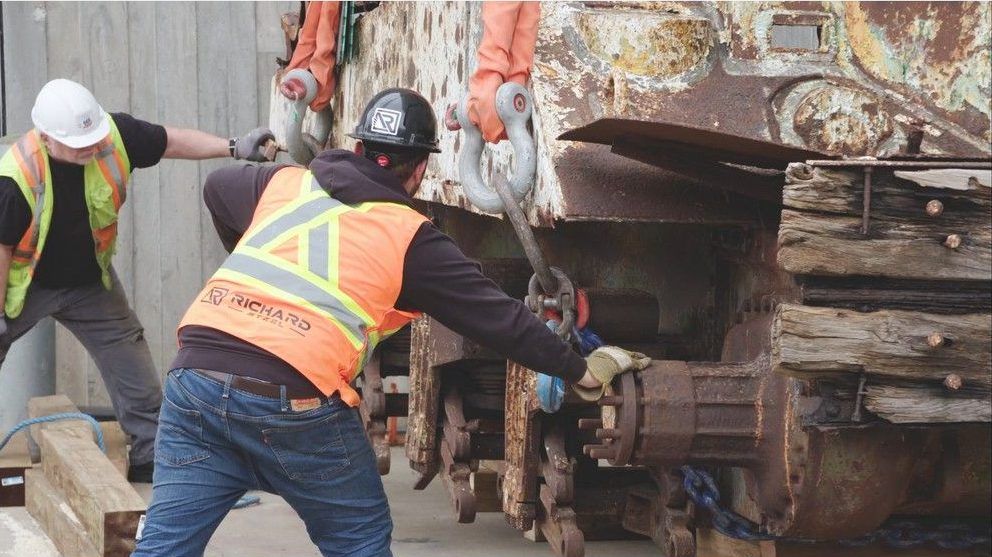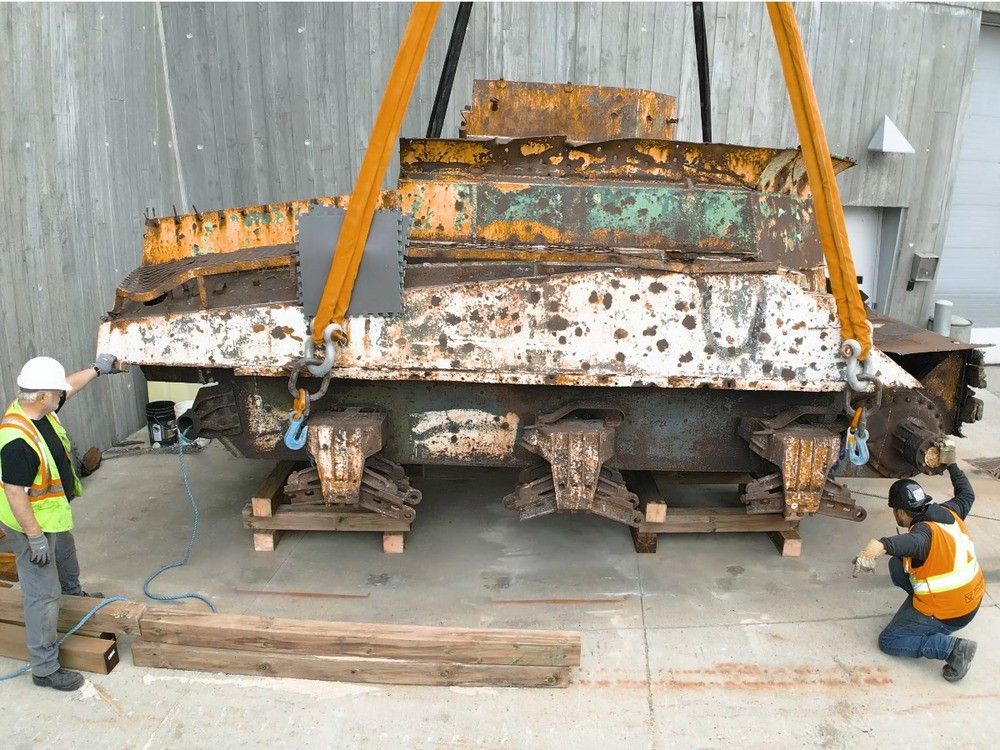The
Canadian War Museum
has obtained a rare armoured vehicle from the Second World War that troops used during the D-Day invasion.
The M4A2 Sherman Beach Armoured Recovery Vehicle or BARV arrived at the museum in late June, but restoration of the war relic will take several years, said Grant Vogl, an arms and technology collections specialist at the war museum.
“It’s currently one of our top priorities for restoration,” he added.
The BARV is only one of five left in the world.
Around 60 of the specialized vehicles were built during the war and it was believed that 48 of them were used
on D-Day, June 6, 1944
. British and Canadian personnel operated the BARVs, which were used to tow disable or destroyed tanks and landing craft that were blocking access to the beaches as waves of soldiers came ashore in Normandy, France.
“The BARVs were some of the first vehicles to hit the beach after the first wave,” Vogl said. “They were definitely taking fire.”
Each BARV was built on the chassis of a M4A2 Sherman tank, but instead of the gun system an armoured super structure was added. The vehicle could operate in water up to three metres deep. One of the crew was a qualified diver who had the job of attaching cables to disabled equipment that had to be towed out of the way.
Sherman BARVs were also used during the Rhine River crossing in March 1945. That operation involved Canadian, United States and British troops. BARVs remained in British military service until 1963, according to the war museum.
The precise
D-Day involvement
of the BARV acquired by the war museum is still being researched, Vogl said, but museum staff have discovered the vehicle’s serial number, which will aid in researching its specific history.
Vogl said the restoration of the BARV would be cosmetic in that it would be prepared for display at the museum in Ottawa, but would not be in running order.

Still the initiative will be challenging.
The war museum has some tracks for Sherman tanks in its parts inventory, but other components will need to be found. This BARV is missing its engine and parts of the suspension.
Much of Canada’s heavy military equipment was left in Europe after the Second World War. Other Sherman tanks and vehicles were sold to militaries in South America, in particular Argentina, which has become a repository of parts. “It’s kind of a wild goose chase to find these parts,” Vogl said. “Sometimes it can be tricky. Some will have to be built from scratch.”
The BARV was originally recovered from a military firing range on Salisbury Plain in southern England. It was donated to Canada by The Tank Museum in the United Kingdom.
The BARV will eventually be displayed at the Canadian War Museum’s LeBreton Gallery, joining the collection of 200 military vehicles in that space.
“It will definitely be a showpiece,” Vogl said.
David Pugliese is an award-winning journalist covering Canadian Forces and military issues in Canada. To support his work, including exclusive content for subscribers only, sign up here:
ottawacitizen.com/subscribe
Related
- Military commander steps down as investigation into Cameron Highlanders social media posts continues
- DND to start construction on new F-35 hangars despite review



